“What Were They Thinking?”
That was the name for a special class of oddball cars presented at the 2013 Amelia Island Concours d’Elegance, in which the Pick of the Day must have played a starring role. Because you really have to wonder.
The 1950 BMW Veritas roadster with a custom body by German coachbuilder Hermann Spohn and perhaps the weirdest “barn find” ever recovered, was presented at the Florida concours amidst the class of wacky misfits. With towering, misproportioned tailfins and oddly designed grille, among other faux pas, the roadster was an apparent attempt to emulate Detroit dream cars of the era.
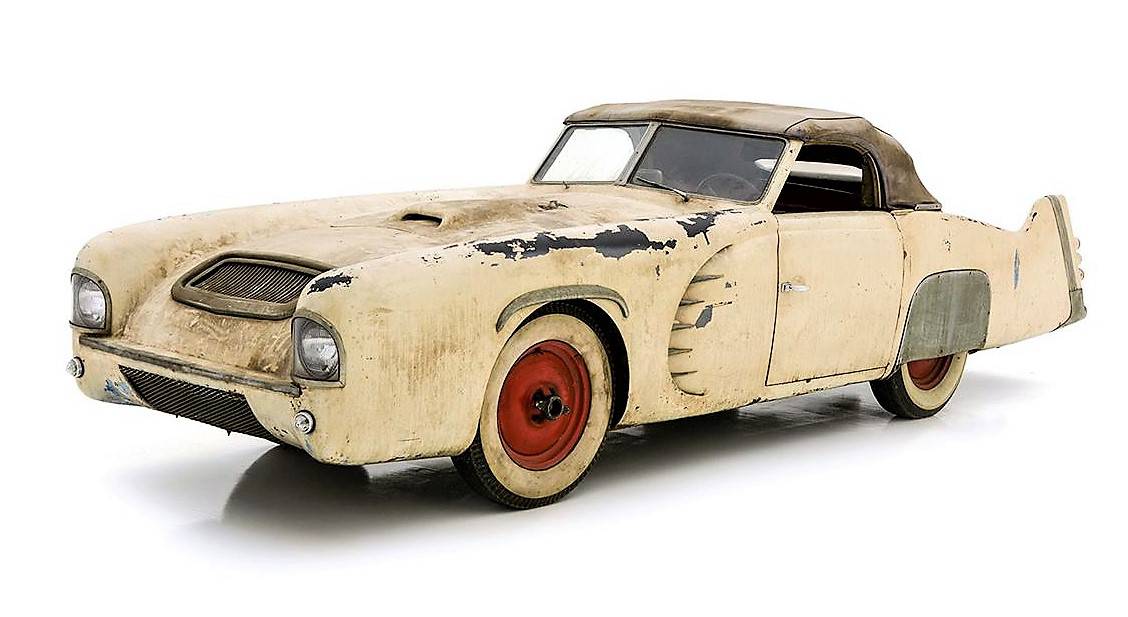
“It is a wonderful example of a coachbuilder experimenting with the boundaries of style, resulting in a fascinating and delightful caricature of the flamboyant 1950s Jet Age,” the St. Louis, Missouri, dealer advertising the car on ClassicCars.com, concludes in the ad.
Although the BMW looks more carnival ride than road-going automobile, the roadster actually has very respectable lineage. Without that context, it probably would be considered just a funny-looking old car.
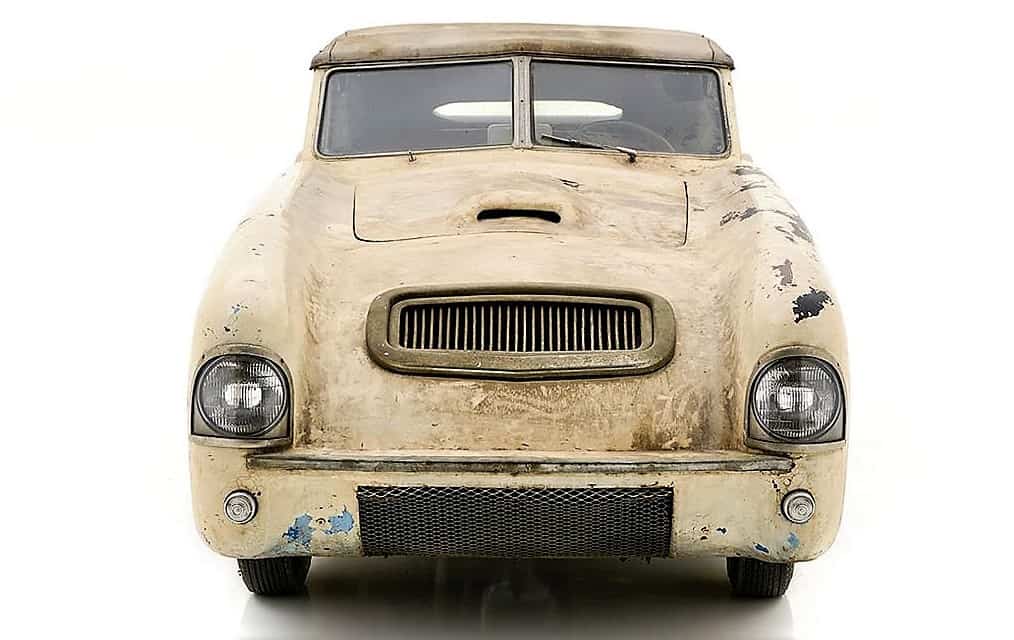
BMW Veritas racers and sports cars, with their normally simple and attractive bodies, were an effort by a small company to recapture the brilliance of Germany’s pre-war racing dominance (notwithstanding the dark political overtones). The seller includes in the ClassicCars.com listing a thorough retelling of the history of Veritas cars.
In a nutshell, the company was founded by three German friends and was soon cranking out a limited number of BMW-based sports and racing cars, which were highly acclaimed and very desirable today as collector cars.
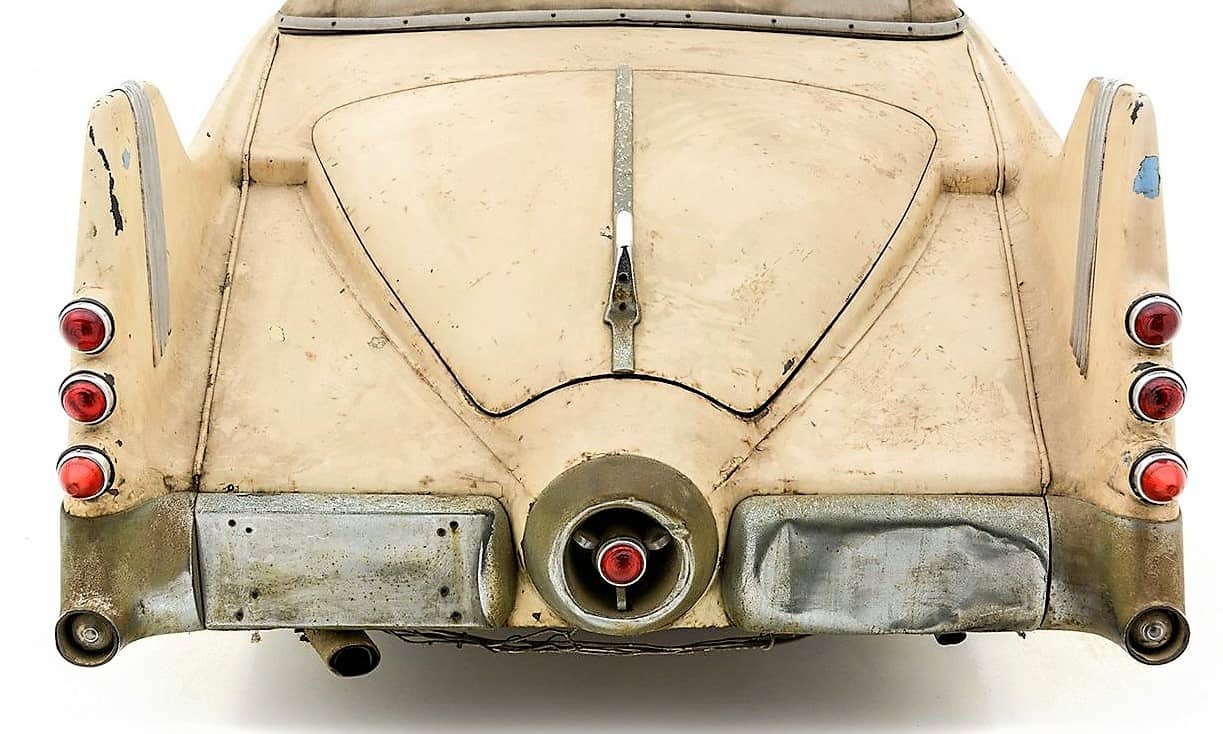
“Veritas’ first customer was legendary racing driver Karl Kling, who promptly won his first event in 1947, and secured the 2-liter sports car championship that same year,” the seller says in the ad. “Soon the grids were filled with Veritas racers, and buyers pushed for road-going versions.
“(Company head Lorenz) Dietrich was happy to oblige, and in 1949 offered a series of production road cars with BMW running gear, lightweight tubular chassis, and coupe, cabriolet, or sports roadster coachwork by the well-known firm Hermann Spohn Karosseriebau.”
That’s right, the very same Hermann Spohn who designed this oddity.
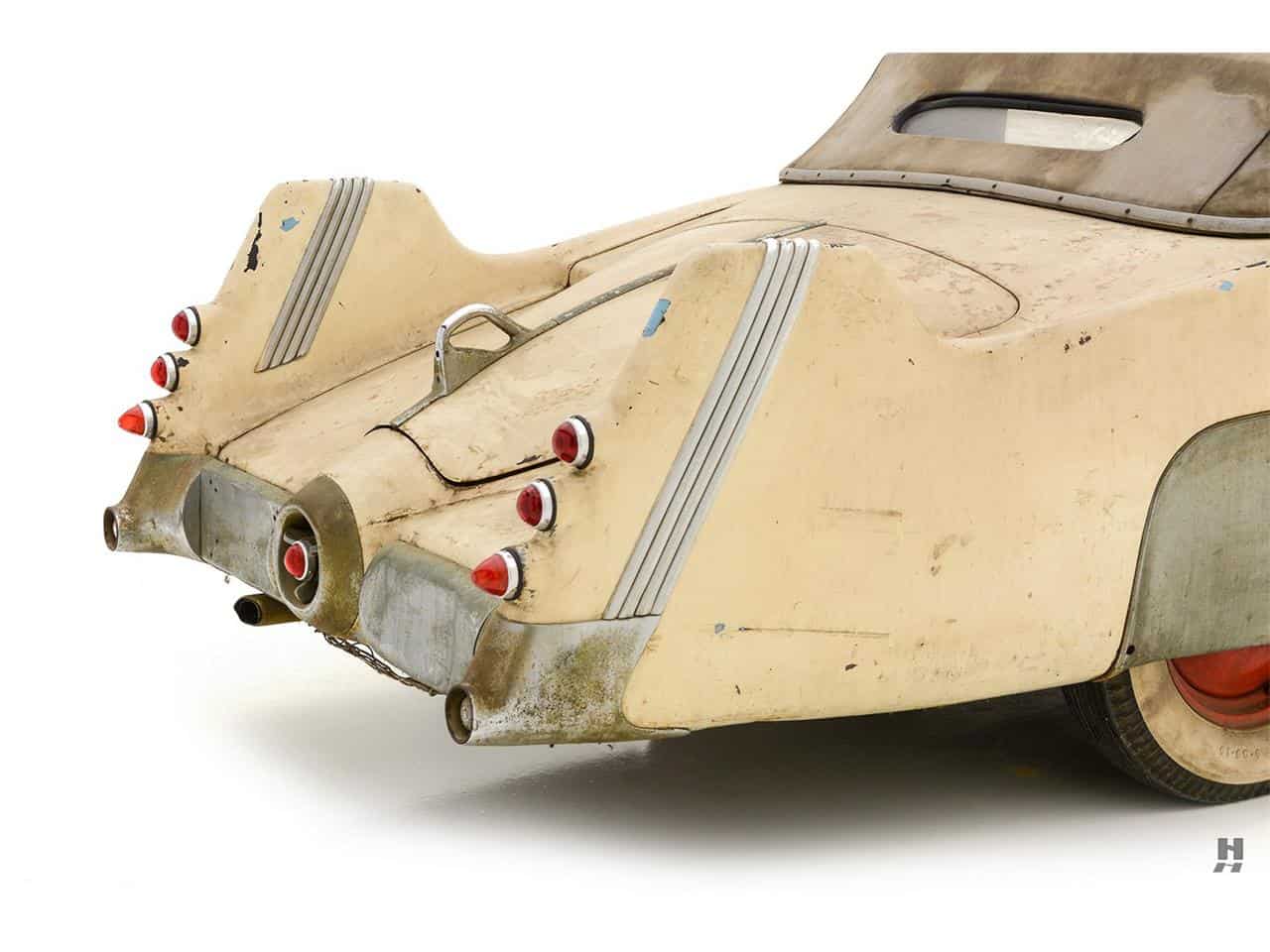
“While most of Spohn’s production work with Veritas is relatively subdued, our featured car is one extraordinary exception,” the ad notes. “Chassis number 5089 started life as a standard Veritas SP90 cabriolet, purchased new by an unknown individual. Very early in its life, the car returned to Spohn, where it received extensive modifications to the customer’s wishes.
“They created an outlandish machine combining elements of the original design with over-the-top fins and jet-age styling cues inspired by the GM Le Sabre show car. Period press reports suggest turquoise as the original color, and photos show it with Cadillac-style sombrero hub caps, wide-whites, chrome rear wheel spats, and the distinct front-end treatment with the near-horizontal faux grille and faired-in headlamps.”
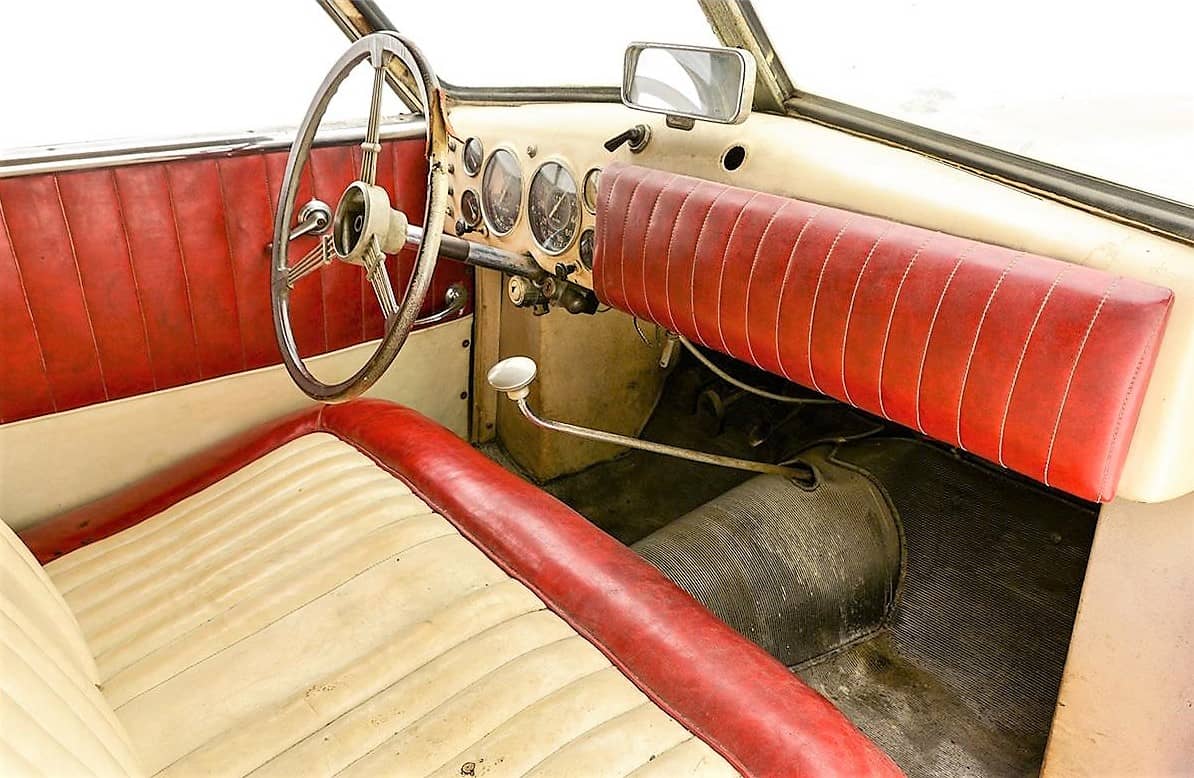
There’s no word as to whether the car’s owner was pleased with the results. Whatever, this cartoon on wheels must have been a bizarre sight traversing the battered landscape of post-war Germany, whose citizens were still struggling economically.
The BMW’s subsequent history is also strange, with it eventually landing in the monumental collection of automobiles, parts, collector’s items and ephemera amassed by Lee Hartung of Glenview, Illinois. The roadster spent 46 years in a barn until, after Hartung’s death, it was sold to a new owner who had the wisdom to leave it just as it was, complete with barn-find crud.
Which is how the St. Louis dealer is offering it today. The asking price is an eye-watering $235,000.
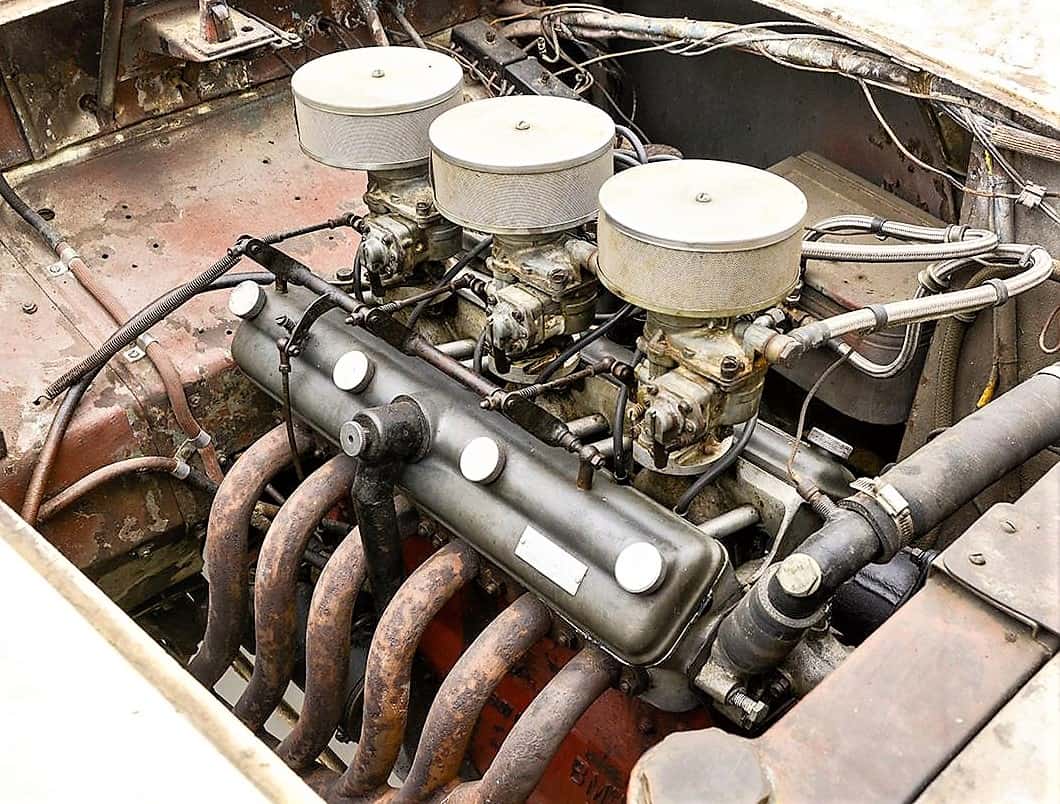
The BMW inline-6 under the hood looks clean, and the one-of-a-kind car is said to be running, which would present a delightful opportunity to impress and amaze your friends and neighbors with the strangest car on the block.
To view this listing on ClassicCars.com, see Pick of the Day.






it’s around one 0 too much in these days
Sorry folks, I don’t care who the designer was or who it was built for, ugly is ugly. I like the engine, but cripes, the design looks like a collaboration between ten different design students in a failing high school program.
If you want a project that will be absolutely different than everyone else, this is it. I actually live in Panama and there are few old cars out there. I decided to buy old cars on the net, ship them here, pay all the shipping and taxes which is considerable just to be different. I ended up with a 1950 Packard. It is looking better each day. It is absolutely different than anyone else here.
It is ugly but it was ugly in 1950.
Note the rear styling is almost identical to the 1951 GM LeSabre concept car.
https://kustomrama.com/wiki/1951_GM_LeSabre
If he tried it today, Hermann GM would probably take Hermann to court.
wow, How right you are…not only the lights but the jet exhaust down to the handle on the trunk.
I would restore it to a wonderful car. We would love to do the upholstery over in exact duplications
how much is thiscar
The article notes it’s $235,000.
I had a discussion with my buddy the other day over exactly which was the ugliest car ever made. I suggested that the (Australian made) Ford Falcon XE series station wagon had to be up there (knowing full well that my friend used to own one) but l believe that the Panhard Dyna is probably worse.
My friend suggested that just about anything made east of the iron curtain before the wall came down must be the hands down winner.
I had to grudgingly agree but you have provided me with the surefire winner for which l thank you.
Now, l have to go. I have an urgent need to find either a bucket or a stout paper bag.
While this car is certainly one that only a blind mother could love, I would suggest that the Spohn bodied Veritas that Wayne Carini bought tops it for pure ugliness.
https://dgrin.com/discussion/233083/they-cant-all-be-beautiful
Yikes. Those photos came from the 2013 Amelia Island Concours class of oddballs. In one picture, you can see this particular beauty in the background. Note that the red Spohn creation has a similar wacky rear as this one.
The engine is a push rod type.Not Over head cam. The camshaft is in the block all 12 push rods go to the rocker shaft. Then through bell crank lever across to the other side of the head.
Bristol car comp used this engine too.
My mistake, Terri-Lee. Looking more closely at the photo, I see it’s the same as the Bristol 6 with that interesting pushrod arrangement, as used by AC. Fixed. Thanks for pointing out.
as I said for around 30,000 you can take him in, there is a lot to do, and in these times you’ll not find a buyer when having finished!
She looks a little run hard and put away wet. That trip to Pluto really took a toll on her.
Hermann Spohn died in 1923. Can’t ‘blame’ Hermann for the design. Josef Eiwanger ran Spohn Carosserie until WWII. Post WWII his son, Josef Junior ran the company. Work for coachbuilders after WWII was almost non-existant. The hundreds that existed before the war almost all failed. Spohn sought survival by building a line of custom cars seeing their market as primarily USAF airman in country for reconstruction. The customer drove in and SELF-DESIGNED the dream custom he wanted built. Spohn was happy to have the work. Some two dozen Spohn Customs were built this way. Not surprisingly for pilots, several specified the Sabre Jet fins that Harley Earl created on his GM Le Sabre concept car which was world renown.
If you don’t like the same styling elements that the pilots chose, just keep in mind that all styling is subjective and in 1951, you probably would not have done any better and likely WORSE.
There is good information on the internet about Spohn and the Customs. However current automotive writers provide their uneducated, ill-informed opinions without doing research, just as the lamestream media does to give you news. Shall I coin “lame auto-journalist”?
Yes, Hermann Spohn the person died in 1923 but the coachbuilder company named Hermann Spohn lived on to create this critter in the 1950s. You should do your own research, just as I did, or shall I coin the phrase “lame commenter.”